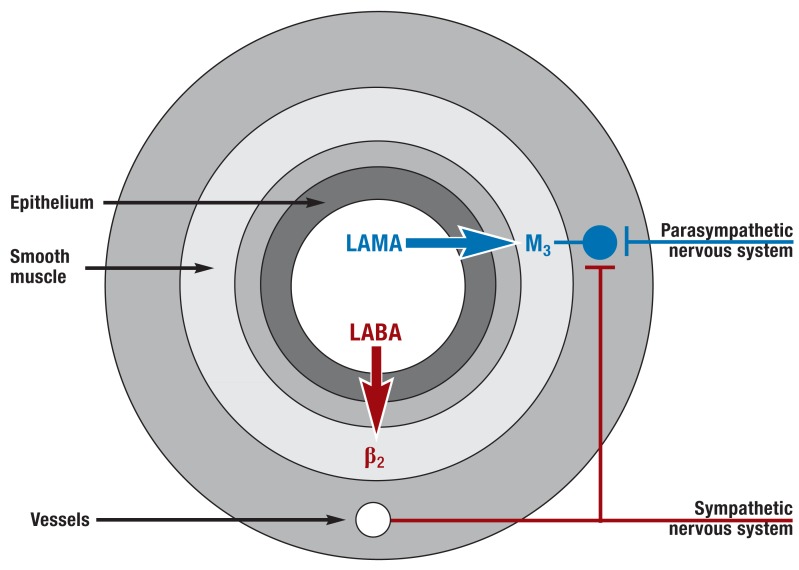Figure 2.
Neuronal control of airway tone and effect of bronchodilators (simplified).
In parasympathetic ganglia in the airway wall, preganglionic parasympathetic nerve fibers (from the vagus nerve) synapse on postganglionic parasympathetic neurons that lead to bronchoconstriction by releasing acetylcholine (mediated in particular by the M3 receptor on the airway smooth muscle). Postganglionic sympathetic fibers do not innervate the human airway smooth muscle but affect airway tone indirectly (via innervation of the parasympathetic ganglia and control of vessel permeability and catecholamine release). Long-acting muscarinic antagonists (LAMAs) lead to bronchodilation by inhibiting muscarinic receptors (particularly the M3 receptor). Long-acting beta 2 agonists (LABAs) cause bronchodilation in particular by stimulating beta 2 receptors on the smooth muscle of the airways (27)

